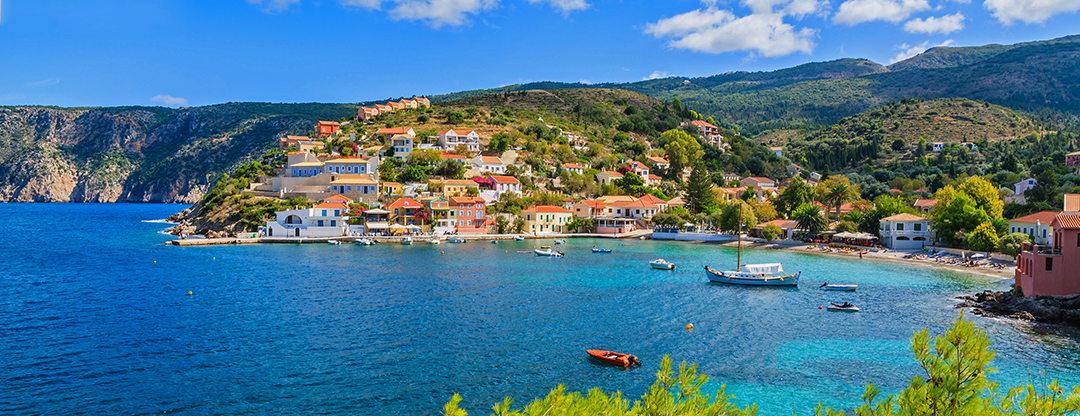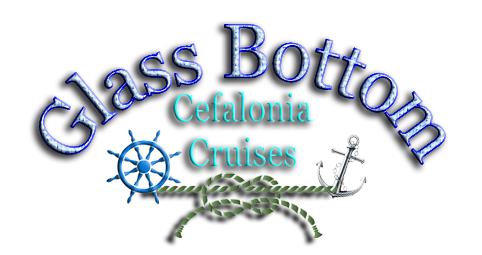
Kefalonia is the largest island in the Ionian Sea. It has an area of 781.5 square kilometers and the population at last census was around 40,000 residents.
According to tradition the name derives from the first inhabitants on the island, the mythical hero Cephalus. It is believed that Kefalonia was created during a major earthquake, something that probably occurred as it is located right on a major seismic fault in the Ionian Sea.
Kefalonia is widely referred into the ancient transcripts saved and recovered nowadays, while Homer's Ithaca is well known throughout the world through the famous Homer’s epics, which widely have been studied.
Historically, alongside with the Greek civilization and the spirit that prevailed in the following century, Kefalonia managed to create and retain its unique and specific local character. The strategic location of Kefalonia within the Mediterranean Sea helped the trading expansion. Because of all those unique characteristics, Kefalonia managed to have prosperity, progress and healthiness, as well as cultural blossoming.
Kefalonia is called the "island of bizarre" because of the number of unusual phenomena recorded on the island, and the “peculiar” (in a good way) behavior of its inhabitants. The coastline and its length of 254 km, reveals a rich horizontal division. Strips of land protruding into the sea, forming the peninsulas of Paliki in the west and Erisou in the north. The sea also forms many broad coves and bays. The main ports are the port Sami, which is opposite Ithaka, the port of Poros located at southeast of Sami and the port of Argostoli to the west of the island, which was a natural strategic naval base in the ancient times. The bays of Myrtos and Athera in the north and the bays of Lourda and Katelios in the south boast charming beaches attract many visitors each year. The geological phenomena of Kefalonia are the so called Katavothres (water sinks), the Drogarati cave and the cavelake of Melisani.
The island boasts many attractions, ranging from the natural landscape and beaches and ending at the great creations of those who passed through Kefalonia during the centuries. The most important are the Castle of St. George, the cave-lake of Melisani, the Drogarati cave with its stalagmites and stalactites, the Archaeological Museum of Argostoli, the monastery of St. Gerasimos, the beaches of Myrtos, Antisamos, Xi, Lourdas and many more that can be seen on Attractions and Beaches section of this guide.
Nutrition in Kefalonia is similar to other Ionian islands, with some variations that include local recipes and delicious local dishes. The traditional cuisine of Kefalonia includes all elements of the Ionian and Mediterranean nutrition: meat, fish, fruits, vegetables. Some of the most popular dishes of the island is the meat pie, the Bourbourelia, which is a kind of pea soup with salt, pepper and olive oil, Aliada, which is also known as skordalia and is a purely local dish and consists of mashed potatoes with sharp garlic sauce and vegetables, Strapatsada, eggs and tomatoes fried in a pan with local olive oil, salt and pepper, Bakaliaropita, which is a pie stuffed with a mixture of cod fish and rice baked in the oven and Chicken "tserepa".
In addition you will find a wide variety of high quality local products such as Kefalonian feta cheese, olives and olive oil, the famous Robola wine and sweets like Mantoles (nougat), Amygdalopita (almond pie with syrup), pastokidono (quince paste), etc.
According to tradition the name derives from the first inhabitants on the island, the mythical hero Cephalus. It is believed that Kefalonia was created during a major earthquake, something that probably occurred as it is located right on a major seismic fault in the Ionian Sea.
Kefalonia is widely referred into the ancient transcripts saved and recovered nowadays, while Homer's Ithaca is well known throughout the world through the famous Homer’s epics, which widely have been studied.
Historically, alongside with the Greek civilization and the spirit that prevailed in the following century, Kefalonia managed to create and retain its unique and specific local character. The strategic location of Kefalonia within the Mediterranean Sea helped the trading expansion. Because of all those unique characteristics, Kefalonia managed to have prosperity, progress and healthiness, as well as cultural blossoming.
Kefalonia is called the "island of bizarre" because of the number of unusual phenomena recorded on the island, and the “peculiar” (in a good way) behavior of its inhabitants. The coastline and its length of 254 km, reveals a rich horizontal division. Strips of land protruding into the sea, forming the peninsulas of Paliki in the west and Erisou in the north. The sea also forms many broad coves and bays. The main ports are the port Sami, which is opposite Ithaka, the port of Poros located at southeast of Sami and the port of Argostoli to the west of the island, which was a natural strategic naval base in the ancient times. The bays of Myrtos and Athera in the north and the bays of Lourda and Katelios in the south boast charming beaches attract many visitors each year. The geological phenomena of Kefalonia are the so called Katavothres (water sinks), the Drogarati cave and the cavelake of Melisani.
The island boasts many attractions, ranging from the natural landscape and beaches and ending at the great creations of those who passed through Kefalonia during the centuries. The most important are the Castle of St. George, the cave-lake of Melisani, the Drogarati cave with its stalagmites and stalactites, the Archaeological Museum of Argostoli, the monastery of St. Gerasimos, the beaches of Myrtos, Antisamos, Xi, Lourdas and many more that can be seen on Attractions and Beaches section of this guide.
Nutrition in Kefalonia is similar to other Ionian islands, with some variations that include local recipes and delicious local dishes. The traditional cuisine of Kefalonia includes all elements of the Ionian and Mediterranean nutrition: meat, fish, fruits, vegetables. Some of the most popular dishes of the island is the meat pie, the Bourbourelia, which is a kind of pea soup with salt, pepper and olive oil, Aliada, which is also known as skordalia and is a purely local dish and consists of mashed potatoes with sharp garlic sauce and vegetables, Strapatsada, eggs and tomatoes fried in a pan with local olive oil, salt and pepper, Bakaliaropita, which is a pie stuffed with a mixture of cod fish and rice baked in the oven and Chicken "tserepa".
In addition you will find a wide variety of high quality local products such as Kefalonian feta cheese, olives and olive oil, the famous Robola wine and sweets like Mantoles (nougat), Amygdalopita (almond pie with syrup), pastokidono (quince paste), etc.
